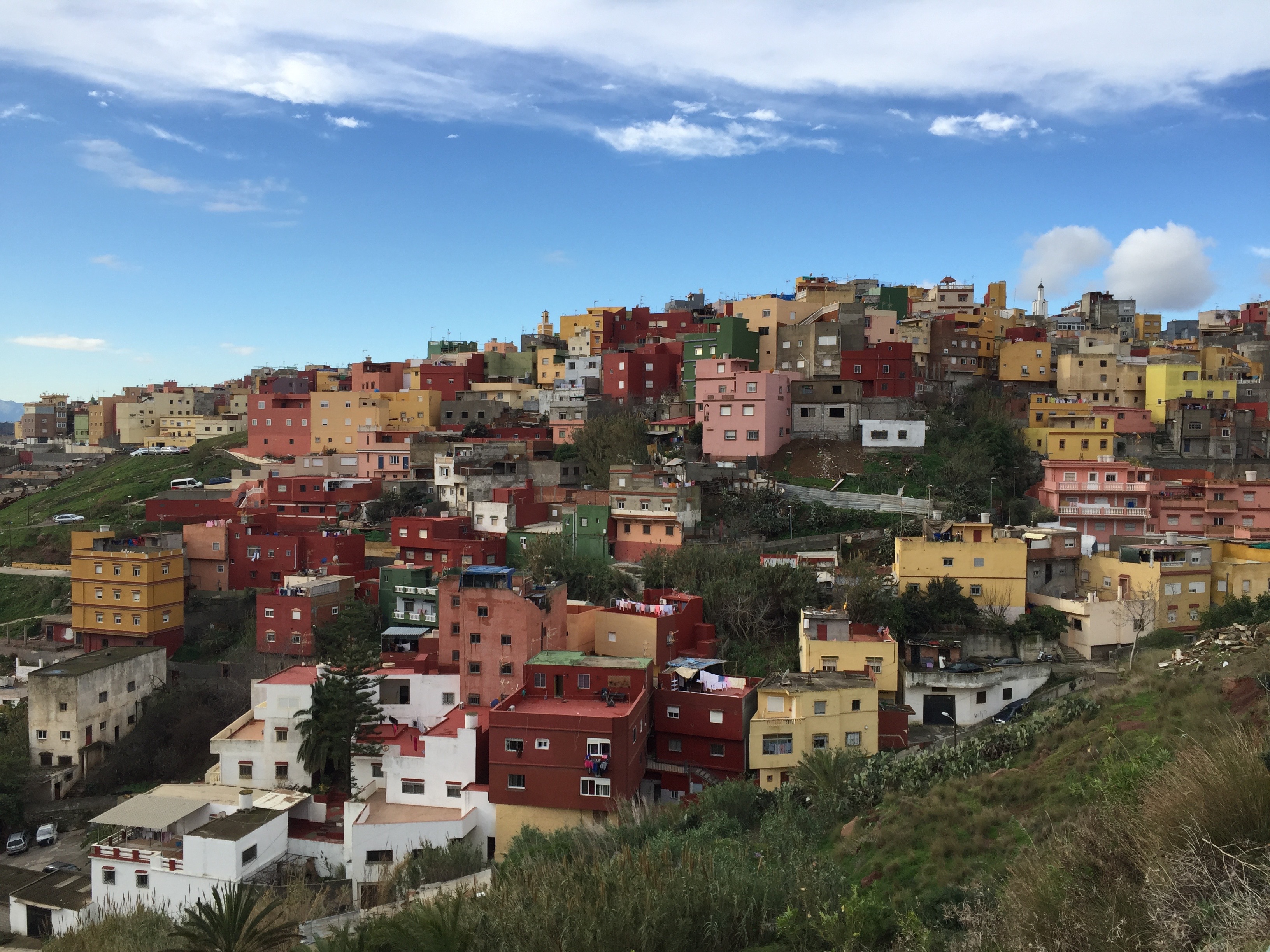Internal bordering in a borderland
Internal bordering in a borderland
Being undocumented in Ceuta and Melilla

‘Y Melilla para qué?’
‘And Melilla, what for?’
With a defiant and suspicious tone, almost shouting, a Spanish border guard, a young and tall woman, asked me this question as I wanted to cross on foot the eastern Moroccan-Spanish border to enter and visit Melilla, one of the two Spanish enclaves north of Morocco and the only terrestrial border between the European and African continents.
This happened years ago. I had recently handed in my doctoral thesis and decided to go on a trip to Morocco and Spain with my partner. We thought it would be a good idea to visit Melilla for the first time, as we had already visited Ceuta, the other enclave, on several occasions. The crossing of the border was unpleasant, yet holding European passports in our hands, we were certainly among the privileged ones, facing little risk of being kept outside of this antechamber to Europe. Later, when I returned to Melilla to conduct fieldwork within the framework of the EU Border Care project, I realised that the border was not only at the border itself. Instead, bordering practices traversed the social fabric of this border city, affecting access to basic social services such as education and healthcare for undocumented persons of Moroccan background.
When Spain restricted access to healthcare for undocumented migrants in 2012, the heated national debate attracted little attention in the Southern borderlands. A social worker from one of Ceuta’s public health centres, whose role was to provide support to patients in difficult social situations, explained: ‘there was a lot of fuss on the mainland, but here it was business as usual, so it didn't affect us much’. Restricting access to healthcare services for undocumented persons became indeed part of the ‘deterrence package’ the border cities had developed long before the contentious measure was voted on the national level (and later discarded in 2018 when a Socialist government came to power).
According to a local NGO, many of the undocumented pregnant women residing in Ceuta did not have their pregnancies monitored, apart from emergency consultations, yet nothing apart from major emergencies can be addressed in these settings. This means that in practice, these women were only admitted to the hospital when they were already in labour. Another local NGO providing social support in a neighbourhood inhabited mainly by residents of Moroccan origin on the outskirts of Ceuta also observed that the women they accompanied to the hospital were told systematically to be monitored in Morocco.
These barriers, in turn, jeopardise migrant persons’ chances for regularisation. When one of the women I met became pregnant with her second child, she could not access healthcare services even though her husband had a residency permit. She received a €3,000 invoice after she gave birth in the local hospital, corresponding to the hospitalisation for the birth and an emergency consultation. It was made clear to her that she had to pay this invoice before being able to apply for a residency permit; in other words, the payment of healthcare invoices conditioned her ability to apply for regularisation. Owing to the specific health needs of women of reproductive age, they are particularly exposed to bordering through social services.
Health institutions mobilise the local police in their attempt to get payment for hospital invoices. A news report published in June 2021 confirms that this practice is still ongoing, with healthcare workers testifying that calling the police when patients lack administrative documentation is typical to identify the person and pursue payment of the invoice.
While municipal agents discuss using facial recognition technology at the border to control migration, INGESA, the institute responsible for managing healthcare provision in the two southern Spanish cities, also announced plans to utilise this tool to identify patients better and ensure the payment of health-related invoices. Given the already existing close collaboration between healthcare providers and the police, the deployment of such technologies might further undermine healthcare accessibility for undocumented residents in these borderlands.
Caught up in the exclusionary politics of these European peripheries, undocumented residents in Ceuta and Melilla have relatively far smaller chances to achieve regularisation than in mainland Spain, which leaves many of them in legal limbo. In these borderland settings, bordering practices impregnate healthcare services, and the instrumentalisation of healthcare for migration control purposes further complicates undocumented women’s chances for regularisation, revealing the far-reaching consequences of expanding bordering practices.
About the Author
Nina Sahraoui, Paris Saclay University, PRINTEMPS, CNRS
Header image: Ceuta © Nina Sahraoui

